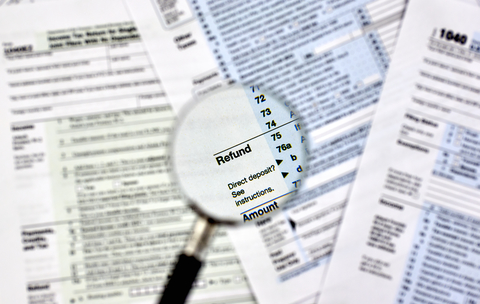
5/1/18 Update: Due to changes in the new tax law, as of the 2018 tax year, some of the tax concepts detailed below may no longer be applicable. Additionally, self-employed individuals may now qualify for the 20% deduction on qualified pass-through income. For additional information and to see if you may qualify for this deduction, check out this article.
If you’re just joining us, this is the second half of a two-part article that takes an introductory look at income taxes. Part 1 focused on taxpayers who are employees of a company and have income taxes withheld from their paycheck. In Part 2 we will be focusing on those taxpayers who are self-employed and, therefore, do not have taxes withheld on their behalf.
Part 2a –Taxpayers Who Are Self-Employed
You said I pay my taxes in throughout the year. How are those payments actually made?
Each quarter, you make an online payment (or write a check) to the IRS for a portion of your estimated full-year taxes.
How do I know how much to pay?
You or your accountant should project out your full-year income each year and divide it up over four quarterly payments. Then, if your expected income changes during the year, you can adjust each quarterly payment accordingly. This process is a big part of your accountant means when they talk about “tax planning” or “tax projections”.
What if my income fluctuates or is hard to predict?
Because it can be difficult to predict annual income in advance, the IRS provides a “safe harbor” to help you avoid penalties. If, at year end, you paid in too little in estimated taxes but you paid in enough to meet the safe harbor amount, you will not be subject to penalties on your underpayment. The amount of tax that needs to be paid in during the year (in equal and timely quarterly installments) in order to qualify for the safe harbor (and avoid penalties) is:
- 90% of this year’s tax (this gives you a little wiggle room for being slightly underpaid), or
- 100% of the prior year’s tax. Note: For taxpayers with AGI over $150k, the 100% safe harbor is increased to 110%
Because you know your prior year’s tax with certainty, you have the option to pay in exactly 100% (or 110%) of your prior year’s tax during the year. Then, if you have a balance due at year end you can pay in whatever tax is still due at that point without having to worry about incurring penalties.
At first glance this might seem like a no-brainer, but paying in the safe harbor amount isn’t always the answer. What if you had an unusually profitable year last year? You would have had higher-than-normal income taxes, and paying in 100% (or 110%) of that amount when your current year taxes may be much lower is not a great way of managing your cash flow. Sometimes you’d rather keep that cash available for use than pay it into the IRS before it is necessary. This is when tax planning and projections become extremely helpful.
In conclusion… why do I get a tax refund?
The short answer – You get a tax refund because you pay in your tax during the year based on your best estimate for what your tax will be at year-end, but your estimate – and the tools used to generate the estimate – isn’t perfect.
And do I really want one?
Unless you are someone who relies on the “forced savings” that a tax refund provides, no, you don’t want a tax refund. Getting a refund is effectively giving the government an interest free loan, and you would have been better off keeping more cash in your pocket (or in your brokerage account) all year and not getting a refund at year end. When you combine this with the fact that you can avoid penalties by utilizing the safe harbor, your best cash flow management strategy may even involve having a balance due at year end.
Part 2b – What if I have both a salary and non-salary income?
This is actually more common than you might think. Maybe you work full-time as a teacher but free-lance over the summer as a tutor. Maybe you own your own company and it is structured as an S-Corp, in which case you may have both salary and non-salary (profit) income from the same company. In these cases, it is important to work closely with your accountant to make sure that either:
- Your withholdings from your salary are high enough to cover the taxes on both your salary and non-salary income, or
- You are paying in estimated taxes in addition to your withholding
However, this situation gives rise to one additional strategy that can be extremely helpful. Unlike estimated tax payments, which are paid on a specific date (whatever date the check was mailed), withholding is deemed to have been paid equally over the course of the year, even if all of the withholding taxes came from a bonus that was paid on December 31st. This means that, if you are in a position to take a bonus, you can estimate your full-year taxes with near-20/20 hindsight in December, pay yourself a bonus at year-end and withhold as much of it as is needed to meet your withholding requirements for the year. The IRS then deems this withholding to have been paid equally throughout the year, minimizing any penalties that may have arisen from writing a check for estimated taxes at year-end.
Not sure if or how this applied to you? Let us know, we can help!
Note: This article was intended to provide a high-level introduction to withholding, estimating and projecting personal income taxes. In practice, this topic can be extremely nuanced and vary from situation to situation. We strongly recommend consulting a tax advisor (like us) when doing any tax planning.
